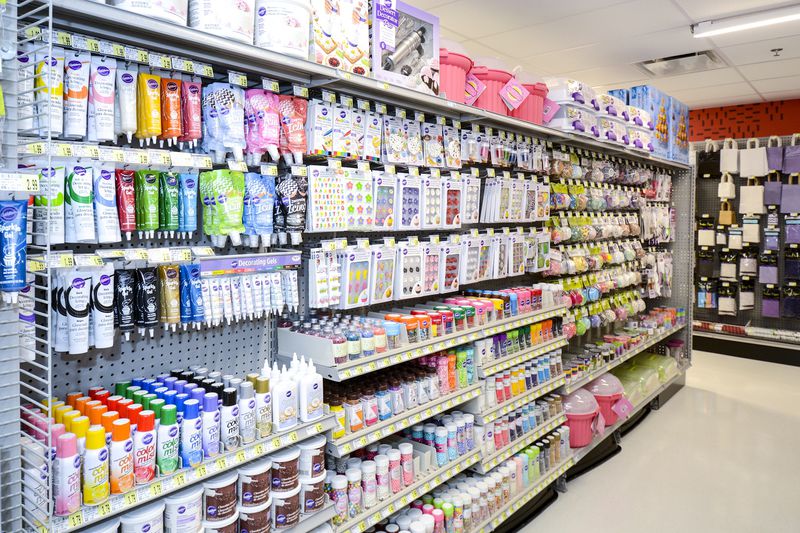Company insurance is intended to safeguard the financial assets of a business owner and is a necessary investment for a craft shop.

This article will discuss the primary insurance coverage for craft shops, general liability insurance, as well as additional products that are appropriate for this industry.
Every firm, regardless of sector, has risks that should be insured. General liability insurance is the most frequent and comprehensive form of coverage that company owners purchase.
General liability insurance covers the following risks:
Physical harm
Damage to property
Medical expenses
Legal defence and decision
Personal and commercial harm
While general liability insurance is not legally needed for companies, operating without it is exceedingly dangerous. If your company is sued, you might face costs in the hundreds of thousands of dollars (or more). The only way to avoid this sort of catastrophe from destroying your organisation is to have an adequate general liability insurance coverage in place to assist pay for these losses.
Example 1: A client slips on an unsecured cable while exploring your yarn selection, injuring their hand and head. While the fall was unintentional, they have a strong case if they wish to claim for compensation. In the case of a lawsuit, general liability insurance would cover the customer’s medical expenses as well as your legal bills.
Example 2: A local competitor says you slandered them in your television marketing campaign and threatens to sue if you don’t stop showing the commercials. Your legal bills and any compensation if you settle out of court would be covered by general liability insurance.
Example 3: You slip and lose control of the cart as you load a large consignment of sewing machines onto the sales floor before the weekend rush. It collides with a client, gravely injuring her. In the case of a lawsuit, general liability insurance would cover the customer’s medical expenditures as well as your legal fees.
Of course, this is not an entire list of risks covered by a general liability insurance policy, and certain situations may result in a specific peril not being covered. To minimise coverage gaps, it’s always better to speak with your agent about the terms of your policy.
Craft shops in America often pay between $400 and $1500 per year for $1 million in general liability insurance.
The cost of your coverage will be determined by a number of variables. Among them are your:
Location
Deductible
Employees’ number
Per-occurrence restriction
The overall aggregate limit
You may be able to get general liability insurance at a lower cost if you buy it as part of a business owner’s policy (BOP) rather than as a separate policy. A business interruption policy (BOP) is a more complete option that covers numerous types of coverage, such as business interruption and property insurance.
While general liability insurance is the most crucial, there are various different types of coverage to be aware of. Other forms of insurance that all craft shops should have are as follows:
Workers’ compensation insurance is required in most states for both part-time and full-time employees. This coverage covers your workers if they are hurt at work or get sick as a result of a workplace accident. It covers not just an employee’s medical expenditures and missed pay if they need time off to recuperate, but also any disability or death benefits resulting from a work-related accident.
You’ve made significant investments in your craft equipment and supplies inventory. If you own the building where you do business, you are liable for any business-related property that is held there in the case of a fire, burglary, or natural catastrophe. After an accident, commercial property insurance would cover the expense of repairing or replacing your equipment and inventory, allowing you to recover fast.
In addition to the insurance listed above, your craft business may need other forms of coverage based on particular elements of your activities. Some of them may not apply to you, so be sure to ask your agent whether policies are appropriate for your company.
While most claims are covered by your general liability insurance policy, certain incidents or lawsuits may be so severe that they threaten to deplete the limits of your main coverage. Commercial umbrella insurance protects you from having to pay for legal expenses and awarded damages that exceed the limits of your main policy out of pocket.
If a fire, storm, or other significant event causes you to shut your doors for an extended period of time, business interruption insurance may assist pay your costs and financial losses until you can reopen. Business interruption insurance is often available as part of a business owner policy, or BOP.
Although investing in company insurance is simple (and necessary), it should not be your first line of defence. Yes, insurance will reimburse your company for cash losses incurred as a result of an occurrence, but it is much preferable to avoid losses altogether.
With this in mind, here are a few steps you can take to better secure your company:
Make use of legally binding contracts and other business agreements. (We provide free templates for several of the most often used legal forms.)
To safeguard your personal assets, form a limited liability company (LLC) or a corporation. (To discover how to incorporate an LLC or company in your state, see our step-by-step tutorials.)
Keep your company licences up to date.
Streamline the internal procedures of your company. This will eliminate unneeded variables from routine activities and establish a secure, consistent environment in which to do business.
If your company is an LLC, you should check into LLC insurance.
